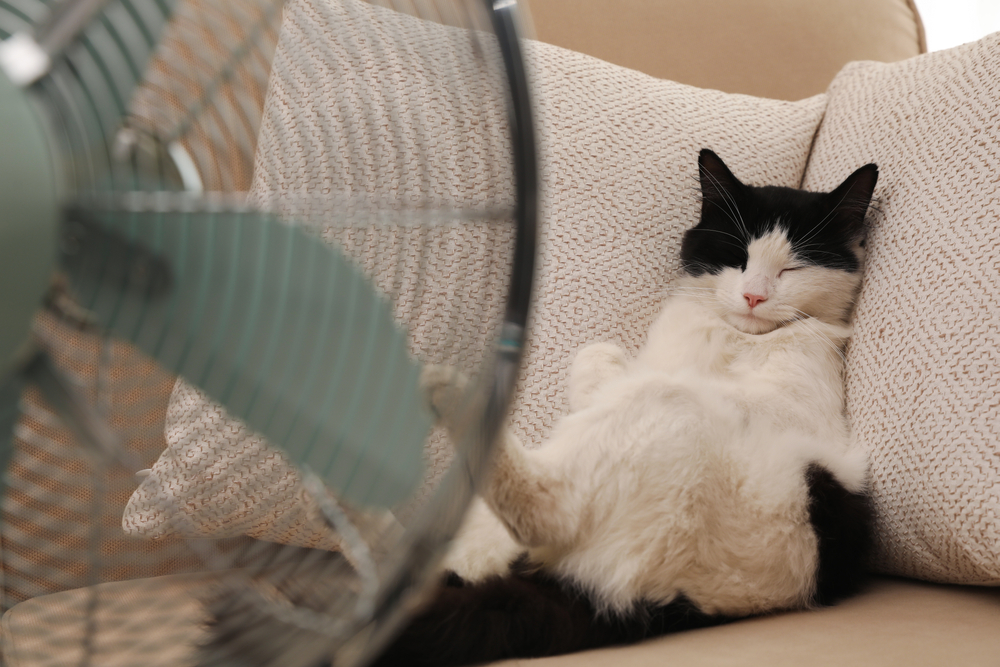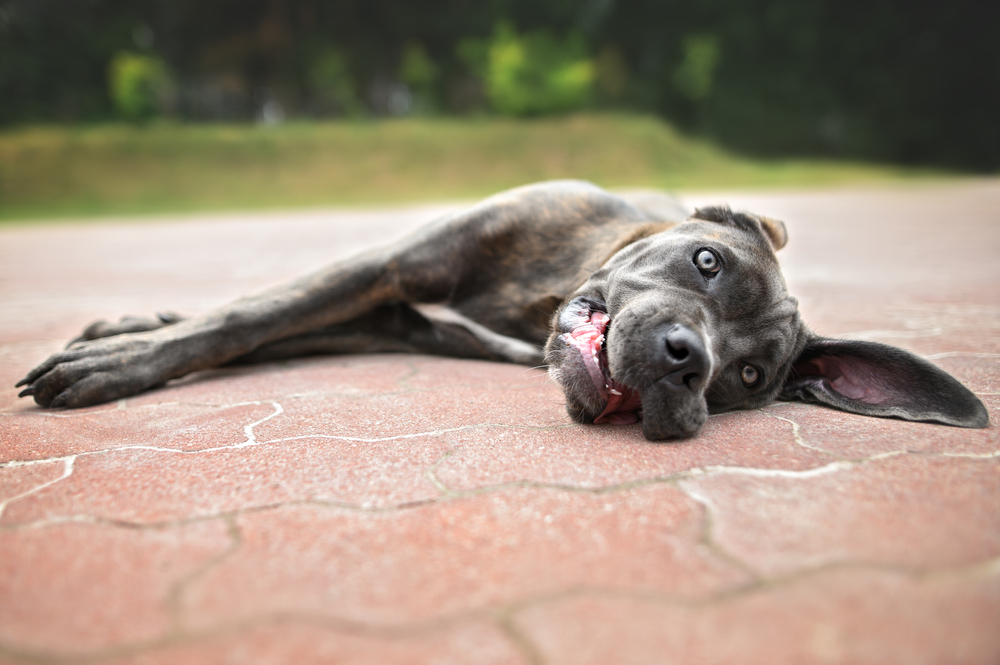Pet owners must take precautions to protect their furry pals from heat-related dangers as the Indiana temperatures increase this summer. All pets are at risk for heat-related illnesses, including deadly heatstroke, especially during transitional periods that leave little time to acclimate to changing weather. The All Breed Pet Care team provides a detailed guide to keep pets cool and comfortable when things heat up.
What happens if my pet gets too hot?
Humans cool down by sweating, but pets have only a few sweat glands on their feet. Instead, pets cool down by lying on cold surfaces or panting, but these approaches aren’t effective in extreme heat or humidity. When pets exercise in hot environments or spend too much time outdoors in the sun, they can develop heatstroke.
Heatstroke occurs when a pet’s body temperature rises above normal, leading to rapid cell damage, organ shutdowns, clotting problems, and death. Signs include excessive panting, drooling, fast heartbeat, lethargy, vomiting, weakness, or collapse. Seek immediate veterinary attention if your pet shows heatstroke signs, as quick action is vital for survival.
Which pets are most vulnerable to heat-related illnesses?
Some pets are more sensitive to heat than others, including:
- Brachycephalic breeds (e.g., pugs, bulldogs, Persian cats)
- Elderly pets
- Puppies and kittens
- Overweight pets
- Pets with dense, fluffy coats
- Pets with medical conditions (e.g., heart disease, breathing problems, thyroid disorders)
How can I help my pet stay cool this summer?
Consider the following strategies to prevent heatstroke and other heat-related illnesses in your pet:
- Provide unlimited access to cool, fresh water and shaded areas
- Keep your pet indoors during peak heat hours and use fans or air conditioning to maintain a comfortable temperature.
- Provide cooling mats, damp towels, or shallow pools.
- Perform strenuous exercise in the early morning or late evening hours when temperatures are lower.
- Never leave your pet in a parked car, which quickly becomes like an oven in the sun.
- Offer pet-safe frozen treats, such as broth cubes or yogurt pops.
How do I safely exercise my pet in the heat?
High outdoor temperatures don’t eliminate your pet’s need for exercise, but meeting activity needs indoors can be challenging. Here are a few tips:
- Time your walks — Choose early morning or late evening when temperatures are lower.
- Choose shaded routes — Plan shaded routes to avoid direct sun exposure.
- Take breaks — Allow your pet to rest and drink water frequently while out and about.
- Check pavement temperature — Avoid letting pets walk on pavement that is too hot to touch comfortably.
- Interactive toys — Puzzle feeders and treat-dispensing toys can provide mental stimulation without a trip outside.
- Indoor games — Small pets can play fetch or run a makeshift indoor agility course.
- Training sessions — Teaching your pet new tricks or reinforcing existing commands is a fun and engaging indoor activity that will tire your pet out indoors.
What should I do if my pet overheats?

Supervising pets at all times while exposed to heat can help prevent overheating, which could progress to heatstroke. If you’re uncomfortable, so is your pet—so move indoors to cool off. If an accident happens and your pet shows heatstroke signs, you must cool them down while transporting them to our hospital or a nearby veterinary emergency facility. Studies show that cooling initiated before arrival at the veterinary hospital can significantly improve survival rates.
To cool an overheated pet:
- Move them to a cool area immediately—ideally, an air-conditioned vehicle for transport.
- If your pet is conscious, offer small amounts of cool—never ice cold—water.
- Pour cool water over your pet and point the air vents towards them.
- Seek veterinary care.
With the proper precautions, summer heat doesn’t have to slow down you or your pet. Contact the All Breed Pet Care team to learn more about pet heat safety or schedule a visit so we can assess your pet’s health and heat tolerance, and you and your pet can enjoy a worry-free season.

